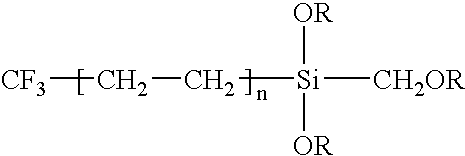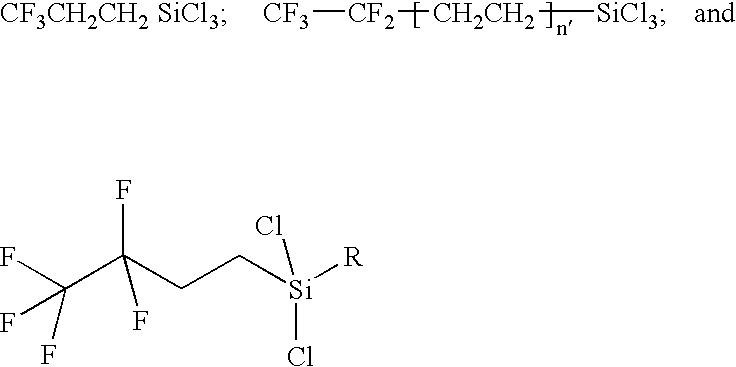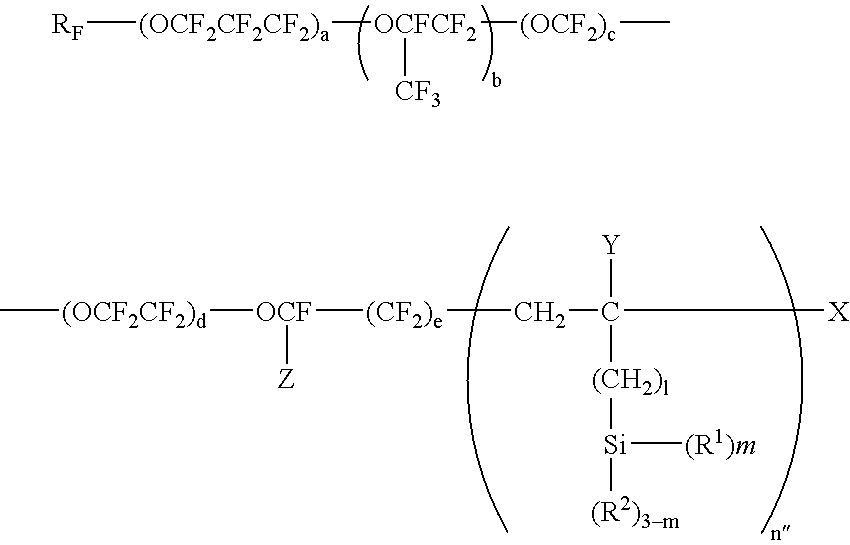Method for improving the edging of an optical article by providing a temporary layer of an organic material
- Summary
- Abstract
- Description
- Claims
- Application Information
AI Technical Summary
Benefits of technology
Problems solved by technology
Method used
Image
Examples
examples
[0173] Organic glasses were prepared, bearing three anti-abrasion, anti-reflection, hydrophobic / oil-repellent coatings that are coated in said order on the substrate.
[0174] The deposits were achieved on substrates which are polycarbonate ophthalmic lenses comprising, on both sides, an anti-abrasion coating of the polysiloxane type corresponding to example 3 in the Patent Application EP 614957 in the Applicant's name. The treated lenses were round 65 mm diameter lenses. The lenses were washed in an ultra-sound cleaning vessel, steamed for 3 hours minimum at a temperature of 100° C. They were then ready to be treated.
[0175] 1. Preparation of the Lenses
[0176] 1.1 Deposition of the Anti-Reflection and Hydrophobic / Oleophobic Coating
[0177] The vacuum treating machine used is a Balzers BAK760 machine provided with an electron gun, an ion gun of the “end-Hall” Mark 2 Commonwealth type and an evaporation source with a Joule effect.
[0178] The lenses were placed on a carrousel provided wi...
PUM
| Property | Measurement | Unit |
|---|---|---|
| Thickness | aaaaa | aaaaa |
| Force | aaaaa | aaaaa |
| Angle | aaaaa | aaaaa |
Abstract
Description
Claims
Application Information
 Login to View More
Login to View More - R&D
- Intellectual Property
- Life Sciences
- Materials
- Tech Scout
- Unparalleled Data Quality
- Higher Quality Content
- 60% Fewer Hallucinations
Browse by: Latest US Patents, China's latest patents, Technical Efficacy Thesaurus, Application Domain, Technology Topic, Popular Technical Reports.
© 2025 PatSnap. All rights reserved.Legal|Privacy policy|Modern Slavery Act Transparency Statement|Sitemap|About US| Contact US: help@patsnap.com



